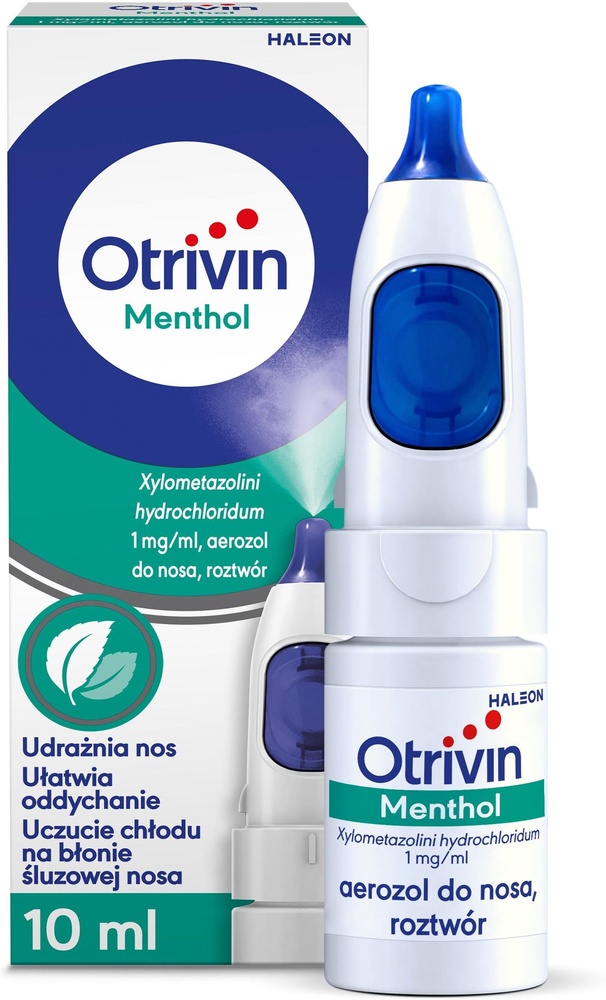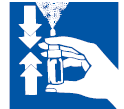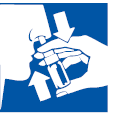

Otrivin

Ask a doctor about a prescription for Otrivin

How to use Otrivin
Leaflet accompanying the packaging: patient information
Otrivin; 1 mg/ml, nasal spray, solution
Xylometazoline hydrochloride
You should carefully read the contents of the leaflet before using the medicine, as it contains important information for the patient.
This medicine should always be used exactly as described in this patient leaflet or as directed by your doctor or pharmacist.
- You should keep this leaflet, so you can read it again if you need to.
- If you need advice or additional information, you should consult a pharmacist.
- If you experience any side effects, including those not listed in this leaflet, you should tell your doctor or pharmacist. See section 4.
- If after 10 days there is no improvement or you feel worse, you should contact your doctor.
Table of contents of the leaflet:
- 1. What is Otrivin and what is it used for
- 2. Important information before using Otrivin
- 3. How to use Otrivin
- 4. Possible side effects
- 5. How to store Otrivin
- 6. Contents of the packaging and other information
1. What is Otrivin and what is it used for
The active substance of Otrivin is xylometazoline hydrochloride.
Otrivin is a locally acting medicine that, by constricting blood vessels, reduces congestion and swelling of the nasal mucosa and the amount of discharge.
For patients with a feeling of a blocked nose, it facilitates breathing through the nose. The special composition of the medicine (moisturizing substances) prevents drying and irritation of the nasal mucosa.
The effect of Otrivin starts within 2 minutes and lasts for up to twelve hours.
Otrivin is indicated for use in adults and adolescents over 12 years of age.
Indications for use:
Excessive congestion of the nasal mucosa occurring in the course of a cold, hay fever, allergic rhinitis, sinusitis. The medicine facilitates the outflow of discharge from inflamed paranasal sinuses. By reducing congestion of the nasal and pharyngeal mucosa, it can be used as an adjunct in otitis media.
Otrivin facilitates nasal endoscopy (examination of the nasal cavity).
2. Important information before using Otrivin
When not to use Otrivin
- if you are allergic to xylometazoline hydrochloride or any of the other ingredients of this medicine (listed in section 6),
- if you have had surgery performed through the nose, e.g. removal of the pituitary gland or surgery involving exposure of the dura mater (brain surgery performed through the nose or mouth),
- if you have narrow-angle glaucoma (increased pressure in the eye),
- if your nasal mucosa is very dry (atrophic rhinitis or dry rhinitis),
- in children under 12 years of age.
Warnings and precautions
Before using Otrivin, you should consult a doctor if you have:
- high blood pressure,
- heart disease (e.g. long QT syndrome),
- hyperthyroidism,
- diabetes,
- prostate enlargement,
- a benign adrenal tumor that produces large amounts of adrenaline and noradrenaline (pheochromocytoma),
- are taking certain antidepressant medicines known as monoamine oxidase inhibitors (MAOIs) or have taken them in the last 2 weeks,
- are taking tricyclic or tetracyclic antidepressants,
- are hypersensitive to substances with a similar effect to xylometazoline. In sensitive patients, Otrivin may cause insomnia, dizziness, irregular heartbeat, increased blood pressure, or tremors.
Otrivin should not be used for more than 10 consecutive days. If symptoms persist, you should contact your doctor.
Using the medicine for a period longer than 10 days or in doses larger than recommended may cause worsening of symptoms or their recurrence.
Otrivin should not be used in the eyes or in the mouth.
Do not use a larger dose than recommended, especially in children and the elderly.
Children and adolescents
Otrivin should not be used in children under 12 years of age.
Otrivin and other medicines
You should tell your doctor or pharmacist about all medicines you are currently taking or have recently taken, as well as any medicines you plan to take.
Do not use Otrivin if you are taking certain medicines used to treat depression. These are:
- monoamine oxidase inhibitors (MAOIs): DO NOT use Otrivin if you are taking MAOIs or have taken them in the last 14 days,
- tricyclic and tetracyclic antidepressants.
If you are taking any of the above medicines, you should consult a doctor before using Otrivin.
Pregnancy and breastfeeding
If you are pregnant or breastfeeding, think you may be pregnant, or are planning to have a baby, you should ask your doctor or pharmacist for advice before using this medicine.
Do not use Otrivin during pregnancy.
During breastfeeding, Otrivin can be used only after consulting a doctor.
Driving and using machines
Otrivin used in recommended doses does not affect or has a negligible effect on the ability to drive and use machines.
Otrivin contains benzalkonium chloride
This medicine contains 0.014 mg of benzalkonium chloride in each dose of the spray, which corresponds to 0.1 mg of benzalkonium chloride in 1 ml of the solution. Benzalkonium chloride may cause
irritation or swelling inside the nose, especially if used for a long time.
3. How to use Otrivin
This medicine should always be used exactly as described in this patient leaflet or as directed by your doctor. If you are unsure, you should consult a doctor or pharmacist.
Otrivin should be used only in the nose (also in otitis media).
To avoid spreading the infection, one package of the medicine should be used by only one patient.
Adults and adolescents over 12 years of age:
1 dose of Otrivin spray into each nostril up to 3 times a day.
Do not use more than 3 times a day. It is recommended to take the last dose of the medicine directly before going to bed.
Do not use for more than 10 consecutive days.
Otrivin should not be used in children under 12 years of age.
Method of use
The medicine is intended for use in the nose.
Be careful not to spray the aerosol into the eyes.
- 1. Do not cut the tip of the applicator. The aerosol is ready for use.

- 2. Remove the protective cap.
- 3. Before the first use, press the pump 5 times. The pump will be ready for further use throughout the recommended use period (do not use the medicine for more than 10 consecutive days). If, after pressing the pump, the aerosol is not sprayed, or if the medicine has not been used for more than 7 days, you should re-prepare the pump by pressing it 4 times.
- 4. Clean your nose.
- 5. Hold the bottle upright, with your thumb on the bottom of the bottle, and the tip between your two fingers.

- 6. Tilt your head forward and place the tip in the nostril.
- 7. Press the pump and at the same time inhale through your nose to ensure optimal distribution of the aerosol.

- 8. Repeat the actions when administering the medicine to the other nostril.
- 9. After use, put the protective cap back on.
The nasal spray allows for precise dosing and ensures proper distribution of the solution over the entire surface of the nasal mucosa.
This eliminates the possibility of accidental overdose.
Using a larger dose of Otrivin than recommended
If you use a larger dose of the medicine than recommended, you should immediately consult a doctor or pharmacist.
In case of overdose, the following may occur: headaches and dizziness, sweating, decreased body temperature, slowed heart rate, increased blood pressure, respiratory disorders, coma, convulsions.
Symptomatic treatment should be used.
Missing a dose of Otrivin
Do not use a double dose to make up for a missed dose.
If you have any further doubts about using this medicine, you should consult a doctor or pharmacist.
4. Possible side effects
Like all medicines, this medicine can cause side effects, although not everybody gets them.
You should STOP using Otrivin and immediately consult a doctor if you experience any of the following side effects, which may be symptoms of an allergic reaction:
- difficulty breathing or swallowing,
- swelling of the face, lips, tongue, or throat,
- itching with red rash or blisters. These symptoms occur very rarely (less often than in 1 in 10,000 patients using the medicine).
Common side effects(occurring in less than 1 in 10 patients):
dryness or irritation of the nasal mucosa, nausea, headache, burning sensation at the site of administration.
Uncommon side effects(occurring in less than 1 in 100 patients):
nosebleeds.
Very rare side effects(occurring in less than 1 in 10,000 patients):
allergic reaction (skin rash, itching), transient vision disturbances, irregular or accelerated heart rate.
Reporting side effects
If you experience any side effects, including those not listed in the leaflet, you should tell your doctor or pharmacist. Side effects can be reported directly to the Department of Pharmacovigilance of the Office for Registration of Medicinal Products, Medical Devices, and Biocidal Products:
Al. Jerozolimskie 181C, 02-222 Warsaw, tel: +48 22 49 21 301, fax: +48 22 49 21 309,
website: https://smz.ezdrowie.gov.pl.
By reporting side effects, you can help gather more information on the safety of the medicine. Side effects can also be reported to the marketing authorization holder.
5. How to store Otrivin
The medicine should be stored out of sight and reach of children.
Store at a temperature below 30°C.
Do not use this medicine after the expiry date stated on the packaging. The expiry date refers to the last day of the month stated.
After first opening, the nasal spray can be used until the end of the expiry date.
Medicines should not be disposed of via wastewater or household waste. You should ask your pharmacist how to dispose of medicines that are no longer needed. This will help protect the environment.
6. Contents of the packaging and other information
What Otrivin contains
- The active substance of Otrivin is xylometazoline hydrochloride. One ml of the solution contains 1 mg of xylometazoline hydrochloride.
- The other ingredients of the medicine are: benzalkonium chloride, disodium edetate, sodium dihydrogen phosphate dihydrate, disodium phosphate dodecahydrate, sodium chloride, sorbitol 70%, hypromellose 4000, purified water.
What Otrivin looks like and what the packaging contains
The packaging of Otrivin is a bottle with a dosing pump containing 10 ml of the solution, in a cardboard box. The dosing pump allows for the correct dose of the medicine to be administered. The packaging contains 60 doses.
Marketing authorization holder:
Haleon Poland Sp. z o.o.
ul. Rzymowskiego 53
02-697 Warsaw
tel. 800 702 849
Importer:
Haleon Germany GmbH
Barthstrasse 4
80339 Munich
Germany
Date of last update of the leaflet:
- Country of registration
- Active substance
- Prescription requiredNo
- ImporterHaleon Germany GmbH
- This information is for reference only and does not constitute medical advice. Always consult a licensed doctor before taking any medication. Oladoctor is not responsible for medical decisions based on this content.
- Alternatives to OtrivinDosage form: Aerosol, 1mg/mlActive substance: xylometazolineManufacturer: Jadran-Galenski laboratorij d.d.Prescription not requiredDosage form: Aerosol, 0.5 mg/mlActive substance: xylometazolineManufacturer: Basic Pharma Manufacturing B.V.Prescription not requiredDosage form: Aerosol, 1 mg/mlActive substance: xylometazolineManufacturer: Basic Pharma Manufacturing B.V.Prescription not required
Alternatives to Otrivin in other countries
The best alternatives with the same active ingredient and therapeutic effect.
Alternative to Otrivin in Ukraine
Alternative to Otrivin in Spain
Online doctors for Otrivin
Discuss dosage, side effects, interactions, contraindications, and prescription renewal for Otrivin – subject to medical assessment and local rules.







